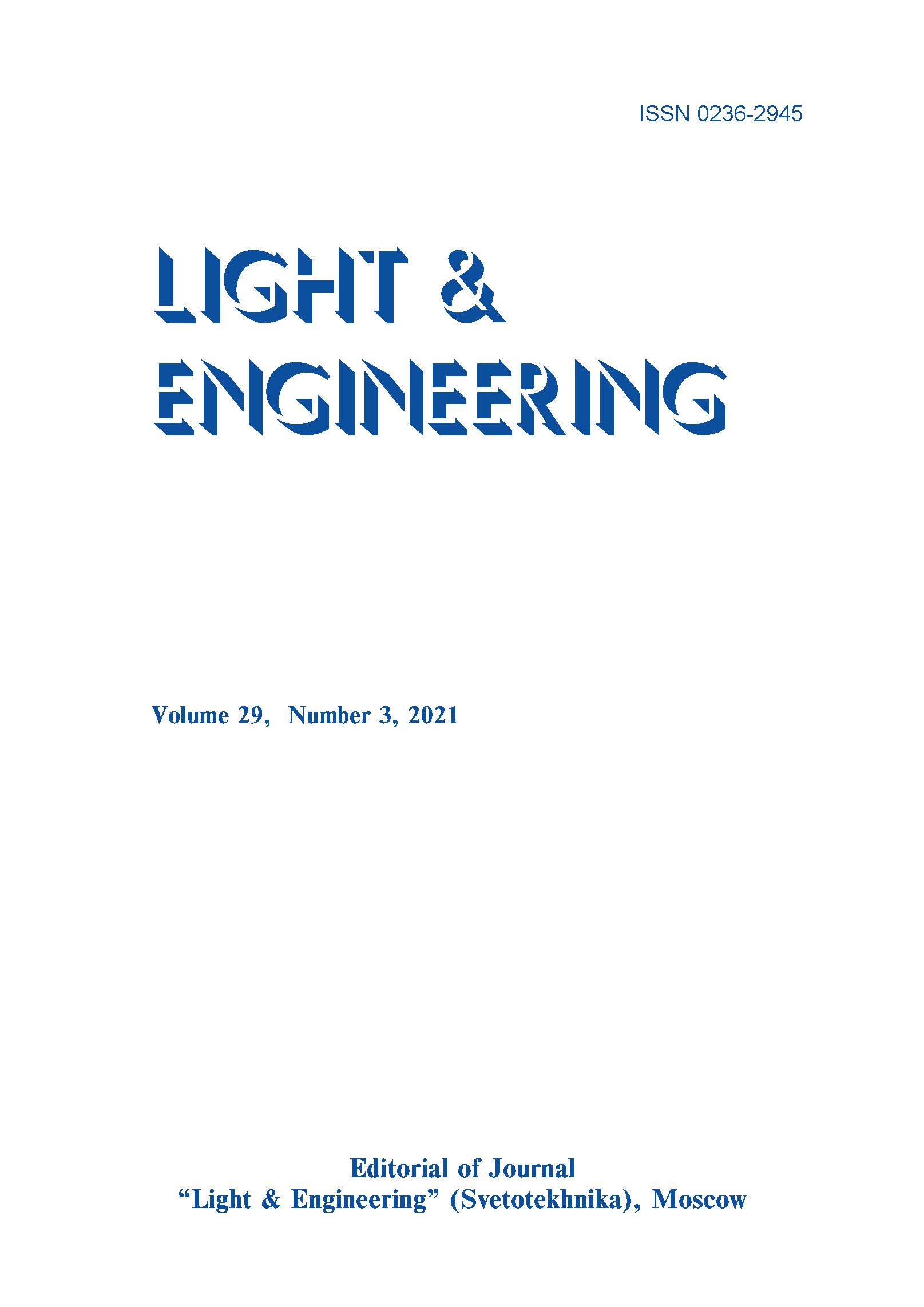Content

Abstract:
The article is devoted to the description of experimental studies of the possibility of increasing the energy efficiency of the lighting installation (LI) through the use of motion sensors. Data on possible energy savings are needed to conduct economic calculations – to estimate the payback period of capital costs for the implementation of a lighting control system (LCS). A quantitative and qualitative assessment of the economic feasibility of creating or developing an LCS is based on calculating and analyzing the costs required for its implementation and comparing the costs with the results obtained during its implementation. The results of the functioning of the LCS can be expressed by such a value as the percentage of possible energy savings, expressed in terms of the ratio of electricity consumption after the introduction of the LCS to the consumption of electricity before its implementation. In this work, this coefficient was determined experimentally. The experiment was carried out in public building – in the laboratory and educational building of the university. A corridor of one of the floors was chosen as the object of the study. For the research, a data collection system based on a digital microcontroller was used; infrared motion sensors were usedas presence sensors. The results of the experiment showed that the presence of people in the corridor varies during the day, by days of the week, from month to month. Studies have shown that, on average, energy savings when using motion sensors in the on / off mode of lamps is at least 50 %. With an increase in the delay time for turning off the luminaires after the motion sensor is triggered, the energy saving decreases from 66.5 % to 48.5 %. When using the standby lighting mode during the absence of people, the savings are reduced from 66.5 % (with the lamps turned off due to lack of movement) to 21.9 %.
References:
1. Dmitriev S.K. Motion and presence sensors – real energy saving // Energy saving, 2009, No. 7, pp. 38–43. 2. Kukharchuk A.V., Romodin A.V., Leizgold K.A., Kashirin A.S., Zakharov A.A. On the issue of calculating the economic efficiency of introducing artificial lighting control systems // Fundamental research, 2015, No. 8–1-З, pp. 114–119. [Electronic resource]. URL: http://www.fundamental-research.ru/ru/article/view?id=38857 (date accessed: 23.02.2021). 3. Leonidov A. Changes in irradiance and illuminance on earth surface during 11-year solar activity cycle // Light & Engineering, 2020, Vol. 28, # 2, pp. 61–66. 4. Reference book on lighting / Ed. Yu.B. Aizenberg. 3rd ed. revised and add. M .: Znak. – 972 p. ISBN5–87789–051–4. 5. Panfilov D., Polyakov V., Polyakov Y. et al. Management of internal lighting of premises // Chip News. 2004. No 2 (85). 6. The economic effect of automation. Evaluation of the economic efficiency of the implementation of the automated information system “HTControl” [Electronic resource]. URL: https://i-topmodel.ru/ekonomicheskii-effekt-ot-avtomatizacii-ocenka-ekonomicheskoi/ (date of access: 18.01.2021). 7. Myshonkov A.B., Shandikov A.M. Development of a method for assessing the effectiveness of automated lighting control systems // Scientific look into the future, 2017, Vol. 1, # 7, pp. 16–21. 8. Code of rules 52.13330–2016 “Natural and artificial lighting” Updated edition of SNiP 23–05–95*. 9. The DPO46 Luxe series LED lamps [Electronic resource]. URL: http://www.astz.ru/ru-production/svetodiodnyiy-svetilynik-serii-dpo46-Luxe/ (date of access: 18.01.2021).
Keywords
Recommended articles
To the Calculation of Dominant and Complementary Wavelengths and Purity L&E, Vol.30, No.3, 2022
Evaluation of Photobiological Efficiency of Spectrum–Combined LED Phyto-Irradiators in Photo-Culture Cucumber Growing L&E, Vol.30, No.3, 2022
Testbed for Studying the Efficiency of Plants Photosynthetic Irradiation Based on Measuring Carbon Dioxide Concentration in the Air L&E, Vol.30, No.3, 2022


